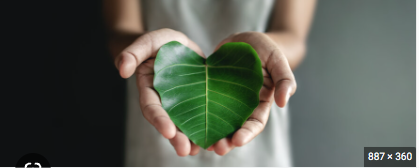Written By: Julia Bailey, Editor in Training
CONSEQUENCE – Overconsumption is killing our planet.
Every year on the 14th of February, thousands of Americans swarm flower shops, bakeries, and candy and jewelry stores, looking for the perfect gift for Valentine’s Day. Nobody wants to be unoriginal or look thoughtless or careless – so they go for the biggest bouquet, the most expensive jewels, and the best decorated baked goods – trying to be the best partners a person can dream of. Unfortunately, something most Americans fail to consider is how this holiday impacts our environment, and what we can do to help minimize our negative impact this Valentine’s Day.
Valentine’s Day initially began as a nice day to appreciate those you loved, celebrations dating back to Ancient Greece where they dedicated a day to Cupid. However, today’s society took this beautiful day and twisted it into another consumerism scheme. Everywhere you look, pink and red balloons, cupcakes, signs, and more; Valentine’s themed everything, from soccer balls to napkins. Every store decked out in pink whilst advertising their Valentine’s day deal, buy one get one free, 50% off, etc. This beloved holiday has been turned into yet another trap while these big companies vie for your attention and money.
Every year, the impact this holiday leaves only worsens, leaving our earth scarred and hurting. According to Susana Arguelles from plasticoceans.org, “February 14, by itself, represents an increase of nine million kilograms of CO2, plus everything “normally” released into our atmosphere.” CO2 gas is already at an all-time high, a significant contributor to global warming, so who knows what consequences this rapid increase could cause. Valentine’s Day staples are also huge mass polluters, such as balloons, taking up to 450 years to degrade, and a possible danger to innocent animals looking for their next meal. Also, glitter and other small decor contain microplastics that will rot our planet for hundreds of years to come, and flowers, whose growing, shipping, and handling cause major repercussions. For example, the greenhouses where many businesses grow flowers release exorbitant amounts of CO2, and the airplanes they take from their homes to be shipped all over the world pollute our air.
Another flaw of the flower industry Maria Savvidi from cyprus-mail.com observes is “producing flowers requires large amounts of water, pesticides and fertilizers, which can contaminate soil and water sources.” While thousands around the world suffer from dehydration, we find comfort in using excessive amounts of water for flowers that, although nice to receive, last maybe a week. Not only is extreme flower production unnecessary, but according to The Atlantic, one in twelve of the flowers you receive have been cut by child laborers in Ecuador, yet another issue to delve into.
Additionally, there is a large amount of waste produced from the cards, wrapping paper, boxes, teddy bears, and plastic products bought and sold on Valentine’s Day. Our oceans are treated as dumpsters, and our soil is littered with microplastics, all thanks to this special day that is supposed to be about loved ones.
Thankfully, there is something that even you can do to help reduce our negative impact on our planet. You can start by only shopping at locally sourced family businesses rather than big corporations and chains; buy natural products, or better yet, make your own. Homemade cards, food, and gifts are perfect ways to show you really care for your partner and your planet. So please, consider cutting down on your harmful impacts on the environment this Valentine’s Day and practice mindfulness to combat our earth’s declining health. Make a change to be the change.

